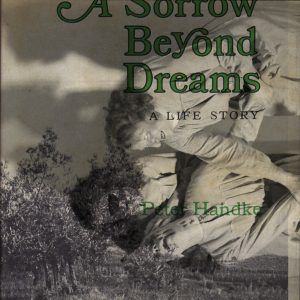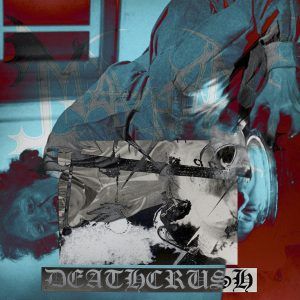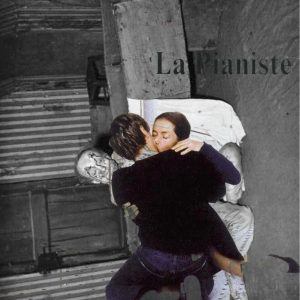by Nickolas Calabrese
 A few months back my boss and I had lunch with the person who, wearing a t-shirt that read “black death spectacle”, stood in protest in front of a painting of Emmett Till by Dana Schutz called Open Casket at the last Whitney Biennial. Shortly after his gesture another artist penned an open letter about how Schutz’s painting uses “black pain” as a medium, and how this use by non-Black artists needs to go. I’m not sure what the ethical verdict is (of whether or not Schutz made a gravely racist error), or whether the artist’s letter voiced an instance of over-reaching aesthetic censorship, nor will I make any attempt at trying to resolve that issue here; it would take far more space than what is available and is not my aim. Consider reading Aruna D’Souza’s recent book Whitewalling: Art, Race & Protest in 3 Acts for a thorough treatment (which, not so incidentally, the above mentioned protestor provided images for).
A few months back my boss and I had lunch with the person who, wearing a t-shirt that read “black death spectacle”, stood in protest in front of a painting of Emmett Till by Dana Schutz called Open Casket at the last Whitney Biennial. Shortly after his gesture another artist penned an open letter about how Schutz’s painting uses “black pain” as a medium, and how this use by non-Black artists needs to go. I’m not sure what the ethical verdict is (of whether or not Schutz made a gravely racist error), or whether the artist’s letter voiced an instance of over-reaching aesthetic censorship, nor will I make any attempt at trying to resolve that issue here; it would take far more space than what is available and is not my aim. Consider reading Aruna D’Souza’s recent book Whitewalling: Art, Race & Protest in 3 Acts for a thorough treatment (which, not so incidentally, the above mentioned protestor provided images for).
What I am interested in, however, is the broader idea of pain as a medium. That pain can be an aestheticized form is completely fascinating, and yet it has been employed since at least the Bible. We’re talking here about both physical and mental pains. How does one explain the benefits of painful aesthetics – of horror, of discomfort, of terror, of anything undesirable in real life; generally speaking, of pain – if pain is intrinsically undesirable for most people? Well I understand pain to be valuable as a tool for education and experience because pain, more than pleasure, has the tendency to traumatize the people who suffer it. In other words, it makes a lasting impression. Pleasure leaves an impression too, but it doesn’t traumatize, and that seems relevant to this discussion.
It is fair to say that people generally avoid pain (both for ourselves and for those we care about) and seek pleasure (likewise) as beings with agency. I would not count painful things like getting a tattoo or having your asshole waxed in this category, because those are instances of pain that entail an immediate reward for enduring the pain, although the notion of reward is probably not that far off when discussing the desirability of painful art. Something like involvement in the BDSM scene is a more complex case, as it may be purely about pleasure, but it may also be a therapeutic way to negotiate one’s relationship with past traumas (think Liliana Cavani’s film The Night Porter, or Elfriede Jelinek’s novel The Piano Teacher). The pains I am referring to are those that most people try to avoid in real life.
Pain, ordinarily speaking, is a bodily sensation; a physical symptom of some cause. If you say, “I’m in pain”, there is a good chance that the person you are saying this to will take it to mean that you are suffering from some physical pain localized in your own body. The language of pain is incorrigible because you state it and you know how you feel better than anyone else does, so your affirmation of whether or not you are in pain is true if you state it and believe it. The International Association for the Study of Pain (IASP) has defined pain as: “An unpleasant sensory and emotional experience associated with actual or potential tissue damage, or described in terms of such damage.” But they also include the following note as an addendum to this rather snug definition:
“Pain is always subjective. Each individual learns the application of the word through experiences related to injury in early life. Biologists recognize that those stimuli that cause pain are liable to damage tissue. Accordingly, pain is that experience we associate with actual or potential tissue damage. It is unquestionably a sensation in a part or parts of the body, but it is also always unpleasant and therefore also an emotional experience. Experiences which resemble pain but are not unpleasant, e.g., pricking, should not be called pain.”
Although the IASP provides a reasonable basis on which to claim pain is physical, they admit that we as sensitive thinking beings are subject to emotions that can seem to fulfill all of the requirements for what counts as pain. This is a pragmatic solution to a subjective problem, but it’s not the most generous account. Individual distinctions between types of pain might not be part of their bailiwick since the IASP are scientists and not ethicists, but it should still count for something like pain, including emotional or psychic pain, and that may be enough for the present course.
So the inquiry remains how we can in some way enjoy an artwork that conveys pain, and if that enjoyment is morally permissible seeing as it takes its cue from someone else’s pain, whether real or fictional. Finding pleasure in another’s misery is captured by the German expression Schadenfreude, which refers to just that (it’s curious that this word only exists in German and not in any other languages, at least none with any traction). The case of fictional pain as a source for enjoyment is an easier rat to catch, because the stakes are lower. But instances of real pain as inspiration for artworks are more challenging. Aaron Smuts tries to address what he calls the paradox of painful art with the following three propositions:
- People do not seek out situations that arouse painful emotions.
- People have painful emotions in response to some art.
- People seek out art that they know will arouse painful emotions.
There are far too many examples to enumerate here, but a few instances from relatively recent history demonstrate this, like the vicious horrors inspired by real life events in Steve McQueen’s period piece 12 Years a Slave, which some critics noted as problematic its beautiful cinematography of the torture of slaves in the American south’s antebellum age. Or in music, Mayhem’s black metal opus Deathcrush was marked by the various acts of violence and aggression in the band, notably the lead singer’s suicide. Even Mike Kelley’s exhibition of a painting by John Wayne Gacy at the end of a hall of portraits of great thinkers titled Pay for Your Pleasure, though not displaying his horrors explicitly, engaged in the aesthetics of pain and what it meant for contemporary American culture to have marveled at mass murder on TV and in the news (it was installed along with a donation box that benefitted groups of victims).
 A very good example of the paradox of painful art is the infamous Parisian Grand Guignol theatre. The theatre was in operation dutifully from 1897 until it fizzled in 1962. Inspired by the melodramas that preceded it, Grand Guignol productions found their inspiration in naturalistic stories, regularly true stories pulled from the crime section of local newspapers. Not unlike its literary contemporaries in France at the time (Zola, Balzac, etc.), its productions were committed to showing real life with all of its imperfections, hideous crimes included. Grand Guignol theatre is important because it made a business out of the fact that, not just perverts and transgressives, but normal people were interested in seeing the creative transformation of real tragedy.
A very good example of the paradox of painful art is the infamous Parisian Grand Guignol theatre. The theatre was in operation dutifully from 1897 until it fizzled in 1962. Inspired by the melodramas that preceded it, Grand Guignol productions found their inspiration in naturalistic stories, regularly true stories pulled from the crime section of local newspapers. Not unlike its literary contemporaries in France at the time (Zola, Balzac, etc.), its productions were committed to showing real life with all of its imperfections, hideous crimes included. Grand Guignol theatre is important because it made a business out of the fact that, not just perverts and transgressives, but normal people were interested in seeing the creative transformation of real tragedy.
Grand Guignol plots would generally be inspired by some episode of true crime that had recently occurred, and would create brief predictable plays about them. You knew who was going to get killed, and you knew it was going to be gruesome. These theatre pieces wanted little more than to present the bleak undercurrents of urban society, stripped of politically correct prophylactics for the audience’s feelings. The audience would oscillate between taking umbrage at the coarseness of the actors and producers, to celebrating the chilling massacres, rapes, abuses, etc. that transpired. This was a real test of moral preservation, as it simulated real crime, but with no material cost to human life, like Kathryn Bigelow’s Strange Days, but for a digitally inferior society. Grand Guignol stands out as an excellent example of valorized pain because of its haphazard naturalism, which neither beautified nor condemned the tragedies it dramatized.
Answering the question of why we desire painful art can take different forms. For Smuts there are two opposing answers that both offer competitive takes on why we desire displeasure from our arts. One answer is that painful art actually produces pleasure in us, like if we have developed our faculty of taste to such a degree that we can understand the play of morality taking place, and can thusly exercise sound moral judgment over the situations depicted, causing us to derive pleasure from our ability to understand depraved acts. The second answer is that we derive something other than pleasure from these artworks and we enjoy that other emotion like a tourist; but exactly what we derive is usually not made explicit.
Smuts himself offers something like what is described in the case of the Grand Guignol’s audience: the pleasure in a simulation without being harmed. This accounts for the striking number of viewers who enjoy horror movies, true crime books, artworks about war, dissonant music, and so on. It also accounts for where the pleasure resides, which is in our imagination. Unlike the physical pleasures of sex or eating, the pleasure derived is purely fantasy. This account comes close, but I think it requires an addendum. Our enjoyment of painful art has something to do with the simulation of experience “on the cheap”, but also has an epistemic quality, wherein the more we know about life, including its ugly hind side, the more we are able to understand the world. Epistemic because of its big-picture version of what the world is – not just the good, but the bad too, in a digestible, nobody-gets-hurt way.
Unfortunately, this still does not answer the question about the morality of instances of painful art, which brings us back to the case of Dana Schutz and her painting of Emmett Till. Now, this painting brought some people pain, or at least something colloquially similar enough to pain. How do we know this? They said so. And the indictment of pain is a truly private determination – only you can confirm with absolute certainty that you are in pain (and even then it can be tricky – but we can sufficiently say that you know better than anyone else knows when you are in pain). Being that pain is a reflection on one’s own current state, it is not up for debate on whether or not the person is actually “hurt” by the artwork that caused the offense (and maybe “offended by” is better nomenclature here, but we will stick with “hurt by” for continuity).
 So if an instance of painful art harms somebody, then it is morally corrupt to some degree. So what to do with works in this genre? How do we reconcile some artwork that uses an instance of immorality to prove a moral point, assuming that this is what Schutz wanted to do? How does the institutionalization of negative imagery heal? Frankly it doesn’t. But so what? We use and consume painful imagery to learn about the world, not to feel sorry for ourselves or to hurt others, and not to heal – just to learn and be able to make better decisions in the future. The many holocaust museums, which house everything from artifacts to paintings of concentration camps, are not a pity party. They are opportunities for people from all walks of life to stop and reflect on how a brutal, sometimes irrational world could produce beautiful things. The moral question is nullified by a greater epistemic question – is a painful work of art something that can cause psychic enlightenment? If so, then it is worth it. I think it’s that simple.
So if an instance of painful art harms somebody, then it is morally corrupt to some degree. So what to do with works in this genre? How do we reconcile some artwork that uses an instance of immorality to prove a moral point, assuming that this is what Schutz wanted to do? How does the institutionalization of negative imagery heal? Frankly it doesn’t. But so what? We use and consume painful imagery to learn about the world, not to feel sorry for ourselves or to hurt others, and not to heal – just to learn and be able to make better decisions in the future. The many holocaust museums, which house everything from artifacts to paintings of concentration camps, are not a pity party. They are opportunities for people from all walks of life to stop and reflect on how a brutal, sometimes irrational world could produce beautiful things. The moral question is nullified by a greater epistemic question – is a painful work of art something that can cause psychic enlightenment? If so, then it is worth it. I think it’s that simple.
A traditional utilitarian model would hold epistemic advances or regressions as, respectively, greater or lesser goods than surface pleasures or pains (like eating ice cream or stubbing your toe). In order to overcome the hurtle of painful art, one must first gain access to a more complex part of their rational faculties before they can heal their heart or soul. Now this doesn’t excuse Schutz from criticism. Painful art can, and should, be used as a tool by artists – but whether or not her painting was simply a bad painting, or an unjustified painting, is neither affirmed nor denied by the above reasoning. I personally dislike her painting, but it has less to do with her subject matter and more to do with my hostility toward abstract gesturing in painting, as well as the obscene (and immoral!) prices that her works carry, as well as what appears to be little justification for her to paint that painting in the greater context of her oeuvre.
In short, Open Casket is a shitty painting, but not for most of the unsophisticated reasons that have circulated. The topic of painful art is much too complex to put puerile outright bans on engaging with it; and it’s far too crucial to put into the hands of those sophomoric artists who lay claims of aesthetic integrity as their justification for making morally impermissible decisions in their art practice. Making work that is normatively justifiable is all that really matters. Providing good enough reasons for what we do is all we really owe each other – beyond that art is just a mess of subjectivity.
